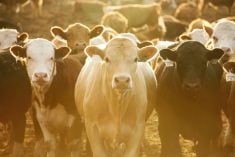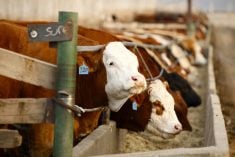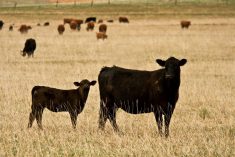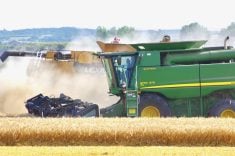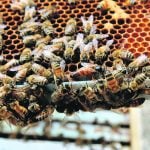Compared to last week, western Canadian yearling markets traded $2 to as much as $8 lower on average. Calf markets were relatively unchanged to $10 lower. There was moderate demand for top quality grass yearlings but plainer types experienced softer buying interest. Pre-conditioned calves held value but unweaned bawlers appear to set back $5-$10.
Seasonally, feeder cattle prices tend to soften in October as more supplies come on the market. November feeder cattle futures have dropped $10 from the contract highs and this resulted in a defensive tone in the cash market. At some U.S. auction markets in the southern Plains, unweaned calves were trading $10-$15 below week-ago levels. This sentiment spilt over into Western Canada. Feeder cattle prices have been bid up high enough so that there is minimal margin on cattle coming into the feedyard. The “hope factor” that fed cattle prices will move significantly higher has faded.
Read Also

U.S. grains: Soy futures post biggest monthly gain in nearly five years on China trade optimism
U.S. soybean futures climbed to a 15-month high and posted their biggest monthly gain in nearly five years on Friday following a rally fueled by the prospect of revived exports to China.
Northwest of Winnipeg, Charolais-based steers off grass weighing 961 lbs. sold for $315. At the same sale, a smaller group of black yearling steers weighing 964 lbs. traded for $304. In central Alberta, a larger group of Angus-based steers straight off pasture weighing 880 lbs. silenced the crowd at $330 and 900-lb. mixed heifers on grass diet notched the board at $281. In the Lethbridge area, Angus-based heifers off grass averaging 850 lbs. were quoted at $293. Backgrounded yearlings were a $10-$15 discount to grass cattle on average. Yearling supplies in Saskatchewan were limited.
In east-central Saskatchewan, Simmental-blended larger-frame steer calves averaging 740 lbs. were reported to have traded at $365. In central Alberta, black mixed semi-weaned steers with full processing records weighing 716 lbs. sold for $370. In the same region, tan weaned heifers off grass weighing 758 lbs. reportedly sold for $316.
Northwest of Winnipeg, Charolais steer calves with a scale weight of 630 lbs. reportedly dropped the gavel at $382 and black Simmental heifers on the card at 626 lbs. apparently sold for $334. In central Saskatchewan, red steers weighing 520 lbs. were valued at $433 and red heifers averaging 515 lbs. allegedly sold for $378. In the Lethbridge area, black Angus steer calves averaging 482 lbs. sold for $443 and similar-quality heifers on the card at 415 lbs. moved through the ring at $414.
Earlier in August, the feeder market appeared to incorporate a risk premium due to uncertainty in supplies. There was a fear in the market. The recent Alberta and Saskatchewan Cattle on Feed report showed a sharp year-over-year increase in August placements. It looks like this trend will continue into September. The risk premium in the market has eroded as feedlots reload for the fall period.
— Jerry Klassen is president and founder of Resilient Capital, specializing in proprietary commodity futures trading and market analysis. Jerry consults with feedlots on risk management and writes a weekly cattle market commentary. He can be reached at 204-504-8339 or via his website at ResilCapital.com.




